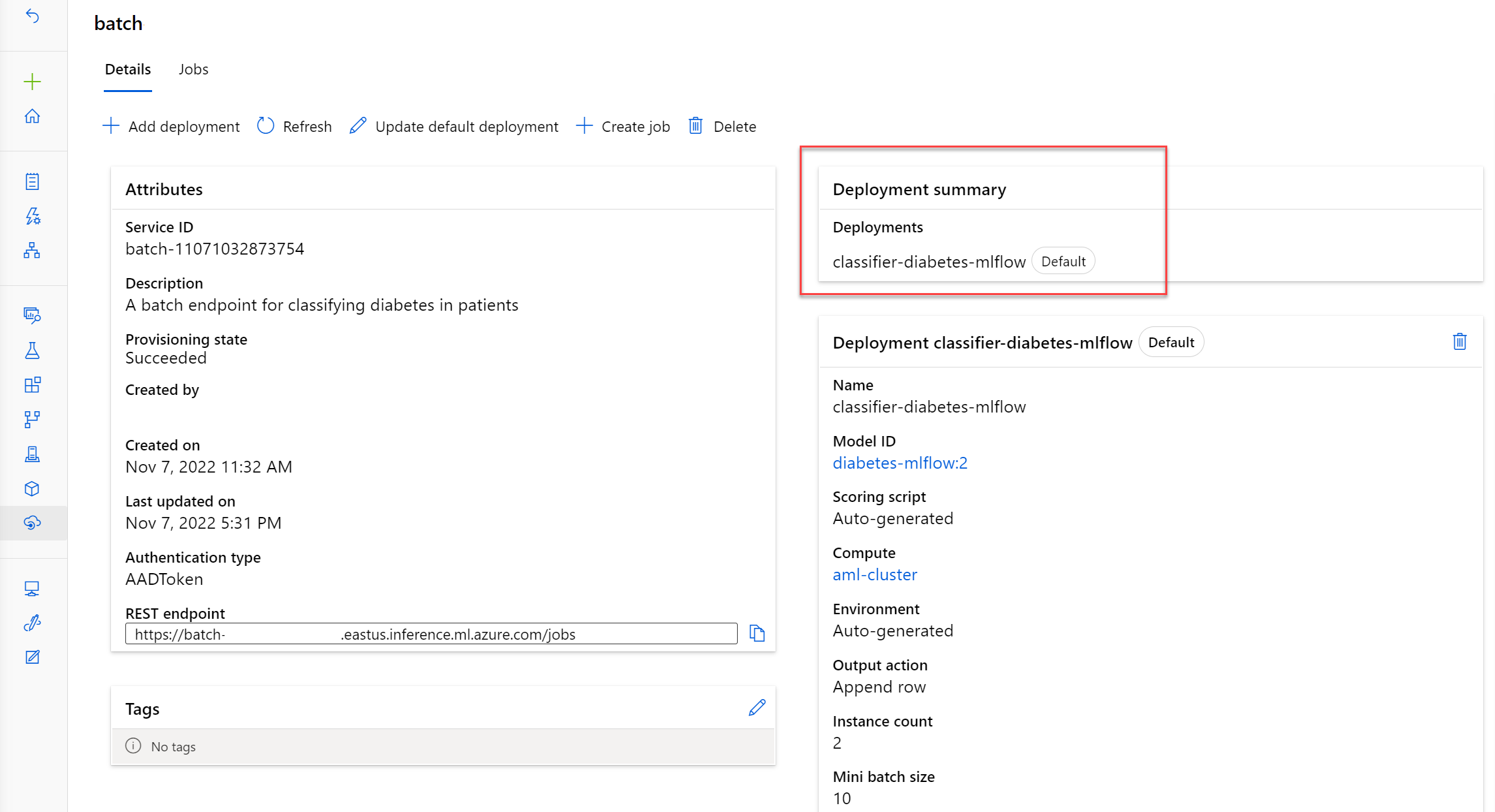Understand and create batch endpoints
To get a model to generate batch predictions, you can deploy the model to a batch endpoint.
You'll learn how to use batch endpoints for asynchronous batch scoring.
Batch predictions
To get batch predictions, you can deploy a model to an endpoint. An endpoint is an HTTPS endpoint that you can call to trigger a batch scoring job. The advantage of such an endpoint is that you can trigger the batch scoring job from another service, such as Azure Synapse Analytics or Azure Databricks. A batch endpoint allows you to integrate the batch scoring with an existing data ingestion and transformation pipeline.
Whenever the endpoint is invoked, a batch scoring job is submitted to the Azure Machine Learning workspace. The job typically uses a compute cluster to score multiple inputs. The results can be stored in a datastore, connected to the Azure Machine Learning workspace.
Create a batch endpoint
To deploy a model to a batch endpoint, you'll first have to create the batch endpoint.
To create a batch endpoint, you'll use the BatchEndpoint class. Batch endpoint names need to be unique within an Azure region.
To create an endpoint, use the following command:
# create a batch endpoint
endpoint = BatchEndpoint(
name="endpoint-example",
description="A batch endpoint",
)
ml_client.batch_endpoints.begin_create_or_update(endpoint)
Tip
Explore the reference documentation to create a batch endpoint with the Python SDK v2.
Deploy a model to a batch endpoint
You can deploy multiple models to a batch endpoint. Whenever you call the batch endpoint, which triggers a batch scoring job, the default deployment will be used unless specified otherwise.

Use compute clusters for batch deployments
The ideal compute to use for batch deployments is the Azure Machine Learning compute cluster. If you want the batch scoring job to process the new data in parallel batches, you need to provision a compute cluster with more than one maximum instances.
To create a compute cluster, you can use the AMLCompute class.
from azure.ai.ml.entities import AmlCompute
cpu_cluster = AmlCompute(
name="aml-cluster",
type="amlcompute",
size="STANDARD_DS11_V2",
min_instances=0,
max_instances=4,
idle_time_before_scale_down=120,
tier="Dedicated",
)
cpu_cluster = ml_client.compute.begin_create_or_update(cpu_cluster)